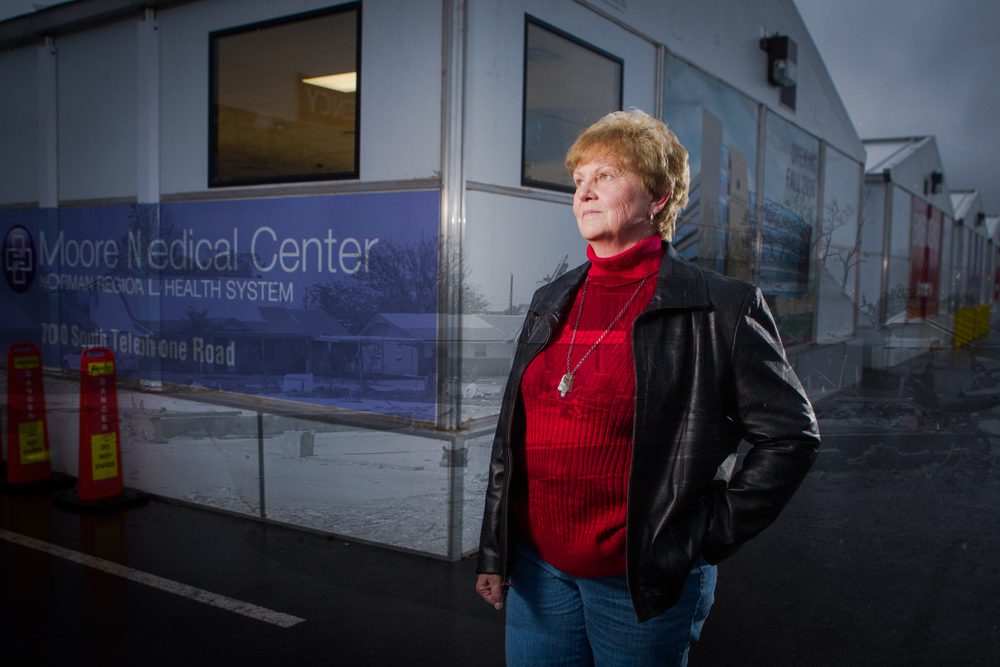
Code Yellow
A resident of the Great Plains for six decades, Alyson Heeke is no stranger to violent storms. Only three years ago, the registered nurse was living in Piedmont, Okla., when she took cover from a massive tornado that damaged her home, destroyed much of her property and leveled the surrounding area.
On May 20, Heeke was looking forward to her workday as the nurse manager in the Family Birth Center on the second floor of the Moore Medical Center. Three babies were scheduled to be born at the center that day, and despite the tornado alert the day before, Heeke was optimistic about her shift at the small community hospital she loves.
Aware of the potential for dangerous weather, Heeke met with the facility’s safety officer to confirm plans should a tornado occur. Doctors advised patients not in labor to cancel their appointments. While Heeke felt prepared, she was not concerned; after all, the tornado the day before had passed them by.
Heeke’s day progressed much as expected. By 1:30 p.m., two of her three patients had safely delivered, but as the storm loomed and intensified, one woman was still in labor. With the tornado headed for the nearby Warren Theatre in Moore, visitors, staff and patients were asked to move to the cafeteria to wait out the storm. Meanwhile, Heeke remained calm.
“Again, I looked at this as another drill,” she says. “I was confident we were not going to have anything more than a bad hailstorm.”
[pullquote]“Again, I looked at this as another drill,” she says. “I was confident we were not going to have anything more than a bad hailstorm.”[/pullquote]
As the rest of the center took cover downstairs, Heeke, her staff and the patient were trapped on the second floor. The mother-to-be had been given an epidural before the storm and was unable to move. The facility’s emergency manager checked on them one last time before taking shelter himself. Heeke later learned that as he ran downstairs, he saw the tornado across the street. The birthing team took cover with their patient in the operating room, an interior area that was free of windows, covering the patient with blankets. A nurse administered medicine to slow down the woman’s contractions, fearful she would deliver as the tornado struck.
“At that moment, a Code Yellow was called overhead,” Heeke says. “This means there have been mass casualties, and all employees are to be contacted to report to the command center. Bonny [a coworker] and I looked at each other and said, ‘Code Yellow, where?’ We still were in patient-care mode and sure the storm would pass…never thinking they were calling the code for us.”
As wind began to crash through the vents and debris slammed into the building, Heeke realized this was not the average spring hailstorm. As she and her team draped themselves over their laboring patient, she says, “The wind sounded like a jet engine. The pressure changes made our ears pop. Then, the (operating room) door blew open, and the wall across the room from us was gone. At that moment, all I knew to do was talk to God.”
And then it was over.
“As we uncovered our heads, we realized the wall was gone, and we could see I-35,” she recalls.























